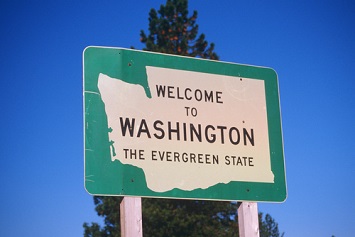Washington is one of the safest places for worker safety and health, the state’s Department of Labor & Industries (L&I) stated Dec. 21, 2018, pointing to recently released workplace fatality figures for 2017.
Washington had the ninth lowest fatal occupational injury rate, the department said, citing the Census of Fatal Occupational Injuries (CFOI) compiled by the Bureau of Labor Statistics (BLS).
“This report shows we’re on the right track,” according to Anne Soiza, assistant director for the Division of Occupational Safety and Health, “but there’s always more to do to keep workers safe and healthy. We all need to continue our focus on preventing falls and the disturbing rise of workplace violence.”
“Every workplace death is tragic,” Soiza said.
“Employers, workers and the state must continue to work together and learn from each serious injury and death, so we can continue to improve Washington’s workplace safety culture,” she said.
While the national rate was 3.5 deaths per every 100,000 full-time employees, the fatal workplace injury rate in Washington was 2.5. The state’s rate increased slightly from 2.4 in 2016.
“Washington’s workplace fatality rate is 30% below the national average,” the department said in a statement.
“The numbers vary from year to year, but Washington consistently demonstrates one of the lowest fatal occupational injury rates in the country,” according to L&I.
The department noted L&I workplace injury prevention efforts, including:
- Safety campaigns with industry and labor partners, and
- Free onsite consultations to employers to help identify and correct workplace safety and health hazards.
Washington had a lower fatality rate for two particularly hazardous industrial sectors—transportation and the farming, fishing and forestry sectors. Washington’s rate of fatal workplace injuries in transportation was 5.8 per 100,000 full time workers, while the national rate was 15.9. The fatality rate for farming, fishing, and forestry in the state was 11.7 and 20.9 nationwide.
The state acknowledged that construction employment remains one of the more dangerous fields but pointed out there only were 15 construction fatalities in Washington in 2017. The fatality rate for the construction industry in Washington was 6.2; and the state pointed out only six states had a lower rate.
A Different Picture in Nonfatal Injuries
Fatal workplace injury counts and rates are not the only health and safety data BLS tracks. In addition to CFOI, the bureau also complies a Survey of Occupational Injuries and Illnesses (SOII) for nonfatal injuries and illnesses.
Washington has a higher rate of total recordable cases than the national average. The national average of recordable cares in 2017 was 2.8 per 100 full-time employees, and Washington’s rate was 4.0. The state was among the 20 states with a rate higher than the national average.
In fact, Washington had one of the five highest rates, which included rates for the following states:
- Maine at 4.8;
- Vermont at 4.6;
- Montana at 4.3;
- Washington at 4.0; and
- Alaska and Hawaii, both at 3.8.
Injury rates can vary among states because of the composition of industries in each state. For instance, the lowest nonfatal injury rate is 1.5 per 100 FTEs in the District of Columbia. Only 41 states and DC participate in SOII. BLS collects data from all 50 states and DC for CFOI.
BLS released its nonfatal injury data November 8, 2018 and CFOI on December 18—you can read our highlights from the CFOI here and here.

